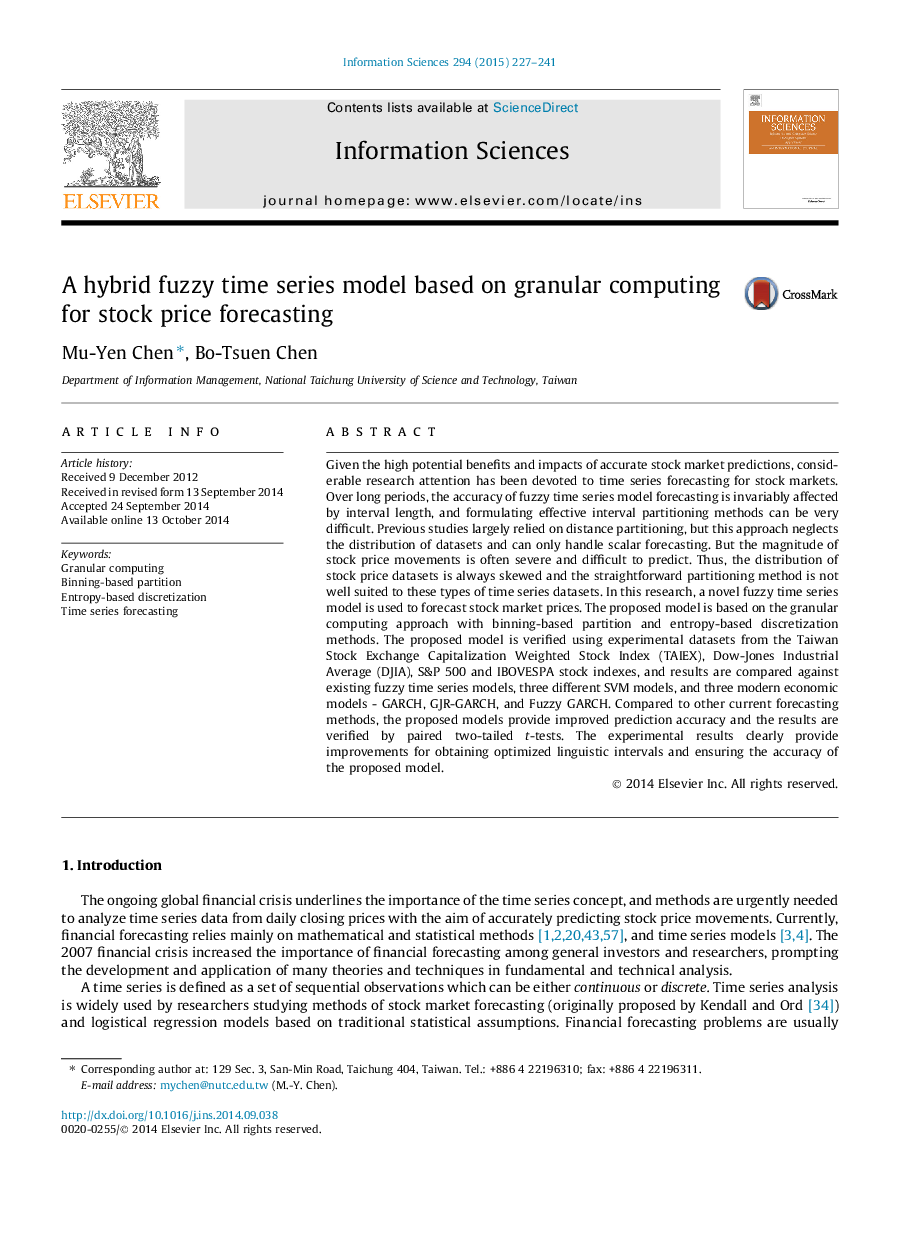| Article ID | Journal | Published Year | Pages | File Type |
|---|---|---|---|---|
| 392246 | Information Sciences | 2015 | 15 Pages |
•A novel time series model was empirically developed to predict the stock prices.•The paper aims to integrate fuzzy time series with granular computing techniques.•The empirical results outperforms the SVR and Fuzzy GARCH time series models.•The empirical results also outperforms the hybrid fuzzy time series models.
Given the high potential benefits and impacts of accurate stock market predictions, considerable research attention has been devoted to time series forecasting for stock markets. Over long periods, the accuracy of fuzzy time series model forecasting is invariably affected by interval length, and formulating effective interval partitioning methods can be very difficult. Previous studies largely relied on distance partitioning, but this approach neglects the distribution of datasets and can only handle scalar forecasting. But the magnitude of stock price movements is often severe and difficult to predict. Thus, the distribution of stock price datasets is always skewed and the straightforward partitioning method is not well suited to these types of time series datasets. In this research, a novel fuzzy time series model is used to forecast stock market prices. The proposed model is based on the granular computing approach with binning-based partition and entropy-based discretization methods. The proposed model is verified using experimental datasets from the Taiwan Stock Exchange Capitalization Weighted Stock Index (TAIEX), Dow-Jones Industrial Average (DJIA), S&P 500 and IBOVESPA stock indexes, and results are compared against existing fuzzy time series models, three different SVM models, and three modern economic models - GARCH, GJR-GARCH, and Fuzzy GARCH. Compared to other current forecasting methods, the proposed models provide improved prediction accuracy and the results are verified by paired two-tailed t-tests. The experimental results clearly provide improvements for obtaining optimized linguistic intervals and ensuring the accuracy of the proposed model.
